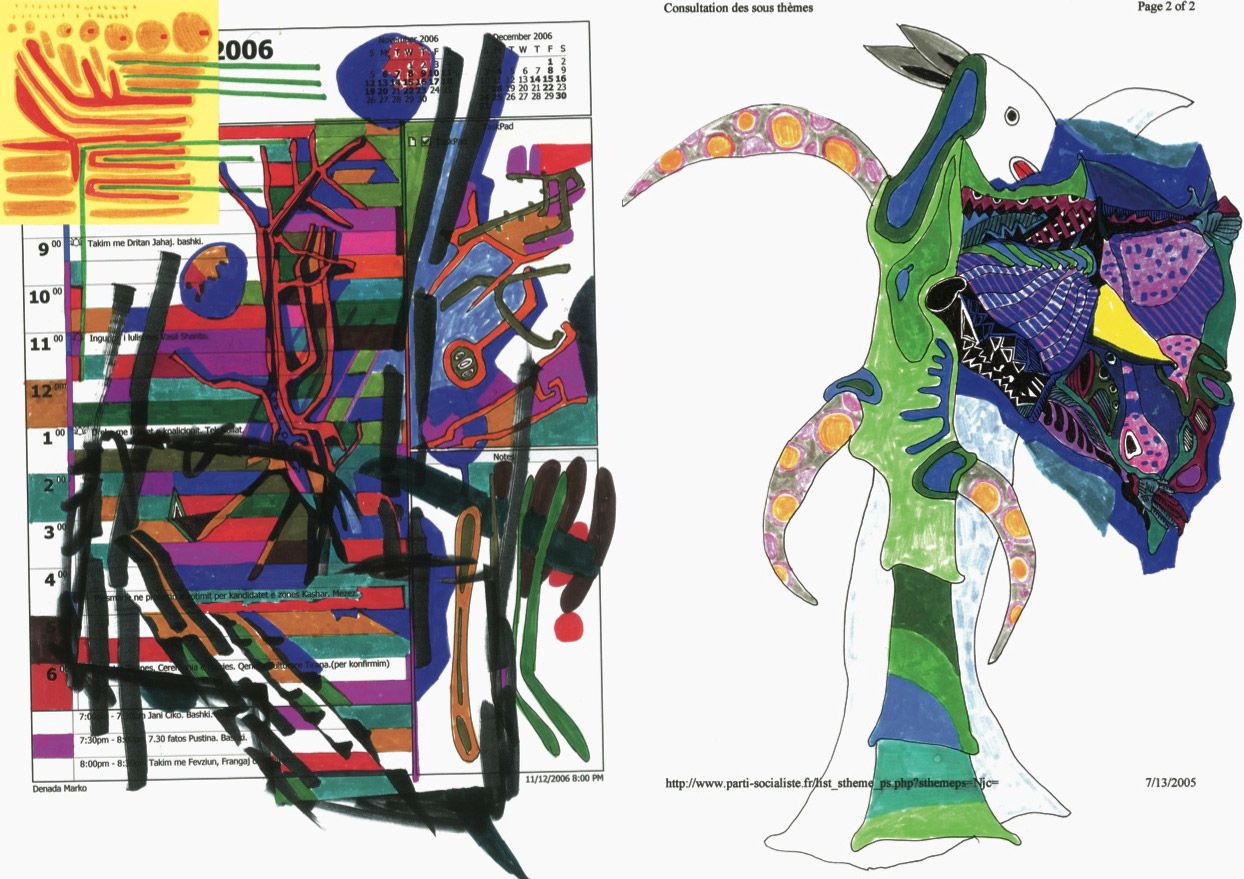Albanian Prime Minister EDI RAMA’s Surrealist Bureaucracy

On June 28, 2009, as the Western press watched with bated breath, Albanians entered polling stations to elect their new government and the prime minister who would lead it for the next four years—would this, the first national election since Albania’s induction into NATO, finally be a peaceable one?
On June 13, 2009, Edi Rama, Tirana’s mayor for ten years and the Socialist Party candidate, announced the release of his new book, Edi Rama 2000-2009, on Albanian National Radio. Rama, a former painter and a celebrated art terrorist of sorts—in the early years of his tenure, he had entire housing blocks in Tirana painted in splashy colors—hoped the book would be another grenade in his progressive arsenal against the Democratic incumbent, Sali Berisha. Done in collaboration with close friend and fellow artist Anri Sala, the book unfolds like a timeline of Rama’s private history through a decade in public office, indexed by his almost daily sketches on office memos and pages of his agenda:
September 07, 2004 reads: “The Other Colors (The Economist); Meta, Krijon Partine e re LSI (Meta Creates the SMI Party; Gazeta Shqiptare); North Pole Was Once Subtropical (BBC News online)
October 07, 2005 (the day of Edi Rama’s acceptance speech as leader of the Socialist Party) reads: Et la terre trembla (Le Monde); Apprendre à lire l’ombre (Le Monde); The Earth and Mars have a breathtaking encountered separated by only 69 million kilometers (NASA press release)
October 29, 2007 reads: No time to paint again. And the days are getting shorter and shorter like life. (Excerpt from the diary of Alexander Rodchenko, October 29, 1943)
In addition to Albanian, Rama seems to read in English, French, and Italian. In addition to Aleksandr Rodchenko, the consummate artist-politico, Rama invites comparison to Tony Blair, Barack Obama, and a multitude of other mayors from across the globe (their umbrae populate the book in the form of newspaper headlines). And in addition to these voices, the sketches themselves sing with crescendo and fervor. They are intricate, ambitious drawings, often figural, smothering dates, names, places, and times in their steady approach of the borders of the page. Sometime after the painting of Tirana’s housing blocks in 2003, they change from blue and black pen to color, as if daubing the façades of buildings had produced a minute revelation in ink on paper. It is these shrunken melodies that lift the book from deconstructed visual medium to acoustic whole—in Sala’s words, “It’s a book about being a book.” Sala’s aural fascination has taken him from his homeland, where he hired a lip-reader to decipher a soundless videotape of his mother in the 1970s, to Senegal to explore phonemic phenomena in the Wolof language. Usually a film artist, he casts Rama as the dirigent of voices local and far-flung, causes historical and contemporary, priorities artistic and populist.

Another nuance in the text is the listing of interplanetary events, such as a lunar eclipse (March 3, 2007), Saturn at opposition to the Sun (February 24, 2008), and the launch of NASA’s Kepler space probe for star-rich regions of the galaxy (March 6, 2009). These serve not as a measure of Rama’s expertise in astronomy, but as a means to refocus the lens. Does the space between two planets trivialize an election in a burgeoning Second-World country, or vice versa? Historically, the ability to concretize the location of planets suggested our collective sentience. For Sala and Rama, it seems to subvert the art-politics binary and dissolve the political frame surrounding Edi Rama, his work, and his motives. The space factoids interspersed amongst Rama’s texts and sketches effectively draw our focus away from current events, blurring the book’s decidedly propagandist agenda and Sala’s creative one. Together the duo presents an aesthetic of depoliticization. As Sala says, “There cannot be a successful answer to the question, ‘Is Edi Rama an artist or is he a politician, or to what extent do these two things overlap?’ He’s a man who is larger than life with extraordinary qualities, whose work and existence question the idea of the frame.”
On July 4, 2009, with the votes in one precinct in the Socialist-leaning south still to be counted and the election hanging in tenuous balance, Berisha announced his decision to form a coalition with the third party, the Socialist Movement for Integration. If accepted, the coalition would signal the SMI’s betrayal of the left, and another four years of conservative chokehold on local politics. Though the election itself had passed with clemency, the Democrats took a no-holds-barred approach to vote-counting, cajoling, buying apostasy, and in some cases outright lying. For all of Albania’s pre-election punctilio and eagerness to join the European Union, the government seemed intent on keeping things pretty much the same. Perhaps in truth, Albania is not ready for a man like Edi Rama and his colorwheel politics. Perhaps the message is still too variegated, the medium too succinct.

